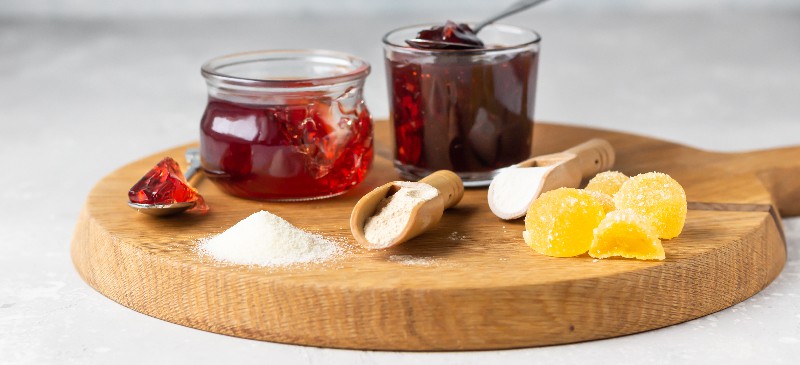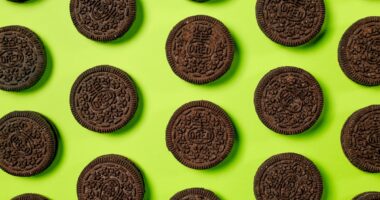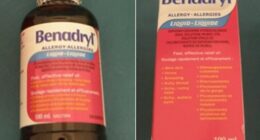
If you’ve ever noticed it on an ingredient label, you may have asked yourself — what is pectin and how does it work? It is a carbohydrate that’s found in citrus fruits, like pear and apple nutrition, as well as other fruits, vegetables and seeds.
It’s often used as a thickening agent and ingredient in digestive remedies, like natural laxatives. It is a naturally occurring polysaccharide (a type of carbohydrate) that contains a good amount of soluble fiber. When it is mixed with liquid, it forms a gel-like substance, much like gelatin and oat bran.
This is what allows pectin to benefit your health by promoting detoxification, lowering cholesterol and increasing satiety. It can even be taken in capsule or powder forms to improve your health.
What Is Pectin?
Pectin is a carbohydrate that’s extracted from fruits, vegetables and seeds. The main use is as a gelling agent, thickening agent and stabilizer in food.
It’s sold commercially as a white- to light-brown powder that’s extracted from citrus fruits.
Companies commonly use pectin in food as a gelling agent, particularly in jams and jellies. It is also used in fillings, medicines, laxatives, throat lozenges, sweets, fruit juices, milk drinks and as a source of dietary fiber.
Apples, guavas, quince fruit, plums, oranges, other citrus fruits and pear naturally contain large amounts of pectin, while soft fruits like cherries and strawberries contain small amounts.
What is the difference between pectin and gelatin? Both form a gel-like substance when they are mixed with liquid. They are both commonly used in food products, like jams, spreads and jellies.
The major difference between the two is that gelatin is found in animal parts. More specifically, it’s derived from partial hydrolysis of collagen.
Pectin, on the other hand, is found in plants, so people on a vegan or vegetarian diet can eat products containing it.
Because pectin is a high source of fiber, it’s commonly used in a high-fiber diet to treat constipation and digestive issues. It’s also known to naturally lower cholesterol, fight diabetes and support weight loss.
Nutrition Facts
Pectin is a natural fiber found in most plants. Apples and oranges, for example, are particularly high in pectin, with the highest concentrations in the skins, cores and seeds.
You can extract it from fruits, or you can purchase a dry mix of pectin at your local health food store.
One package (approximately 50 grams) of an unsweetened, dry mix of pectin contains:
- 163 calories
- 45.2 grams carbohydrates
- 0.1 grams protein
- 0.1 grams fat
- 4.3 grams dietary fiber
- 0.2 milligrams copper (11 percent DV)
- 1.4 milligrams iron (8 percent DV)
- 0.2 milligrams zinc (2 percent DV)
Benefits
1. High Source of Fiber
Pectin fiber is more than just a regulator — it’s a benefit-rich fiber that’s water-soluble and helps lower cholesterol and increases digestive health.
As a soluble fiber, it works by binding to fatty substances in the digestive tract, including cholesterol and toxins, and promotes their elimination. This means that pectin benefits the body’s detoxifying capabilities, helps regulate the body’s use of sugars and cholesterol, and improves gut and digestive health.
A 2014 study published in the Journal of Agricultural and Food Chemistry found that pectin reduced the extent of lipid digestion, which was attributed to its binding interactions with specific gastrointestinal components.
Lipid digestion is when large fat droplets are broken down into smaller droplets. This makes it easier for the fat-digesting enzyme, called pancreatic lipase, to digest.
This helps your body break down fats into fatty acids.
A 1994 study published in the Journal of Nutrition found that rats that were fed diets containing pectin had lower LDL and liver cholesterol concentrations than the control group after a 28-day pectin-supplemented diet.
2. Lowers Cholesterol
Pectin is a water-soluble fiber that can bind cholesterol in the gut, thereby preventing its absorption into the bloodstream. Research suggests that the proper dose for high cholesterol is 15 grams of pectin per day.
Pectin can be consumed directly from high-fiber foods like fruits, vegetables and seeds. Plus, these healthy foods are known to lower cholesterol because of their overall fiber content.
A 1998 study published in the Journal of Physiology and Biochemistry suggests that pectin ingestion results in a decrease of cholesterol levels in liver and serum as well as an increase in waste matter. The study involved normal rats that were fed a diet containing 2.5 percent or 5 percent apple or orange pectin, or no pectin, which was the control group, for three weeks.
Cholesterol concentrations were determined in waste (stool) after one, two and three weeks of treatment and in liver and serum at the end of the experimental trials. Cholesterol concentration in waste matter showed a significant increase by week three in rats fed 5 percent orange or apple pectin.
Hepatic cholesterol concentration declined significantly in all pectin-fed groups.
Another study conducted at the University of Florida College of Medicine found that a grapefruit pectin-supplemented diet, without change in lifestyle, can significantly reduce plasma cholesterol. The study lasted for 16 weeks, and it involved 27 human volunteers who were screened to be at medium to high risk for coronary heart disease due to hypercholesterolemia.
The study did not interfere with the participants’ current diets or lifestyles. Grapefruit pectin supplementation decreased plasma cholesterol by 7.6 percent and LDL cholesterol by 10.8 percent.
3. Controls Diarrhea
Pectin increases viscosity and volume of stool. Therefore, it’s commonly used for natural relief of constipation and diarrhea.
A 2001 study conducted at the Centre for Health and Population Research in Bangladesh evaluated the beneficial intestinal effects of dietary fibers from green banana or pectin in children with persistent diarrhea.
In the study, 62 boys, age 5–12 months, were randomly given a rice-based diet containing either cooked green banana, pectin or the rice diet alone. After seven days, stool weight and consistency, frequency of vomiting and purging, and duration of illness were measured.
By day three post-treatment, significantly more children recovered from diarrhea receiving pectin or bananas than controls, and by day four, these proportions continued to increase.
The results indicate that green banana and pectin significantly reduce amounts of stool, oral rehydration solution, intravenous fluid, frequency of vomiting and diarrheal duration — and that pectin is an important step to take to stop diarrhea.
Studies also indicate that pectin can help treat diarrhea-predominant irritable bowel syndrome.
4. Fights Diabetes
Pectin is known to slow down the activity of enzymes that break down starches and sugar.
The absorption of carbohydrates and sugars is slowed down because of the fiber content. This helps prevent blood sugar spikes, which cause glucose intolerance, weight gain and diabetes.
A 1988 study published in the American Journal of Clinical Nutrition evaluated the effects of pectin ingestion on 12 non-insulin-dependent type 2 diabetic patients. The participants were tested for their gastric emptying, glucose tolerance and hormone responses after being placed on a 2,400-calorie, low-fiber diet for two weeks, followed by four weeks of an added supplement with 20 grams of apple pectin.
The results suggest that sustained pectin ingestion slows the gastric-emptying rate and improves glucose tolerance, making it a viable natural aid for diabetes symptoms.
5. Aids Weight Loss
Pectin is a water-soluble complex carbohydrate that serves as a fat-burning food. Because the consistency is gum-like or gel-like, when you eat fresh fruits or veggies with pectin, the cells absorb it instead of the fat.
READ RELATED: 10 Best Sam's Club Foods to Buy for Weight Loss
It also helps you feel full longer. That satiated feeling means you’ll chow down less throughout the day.
A 2014 study conducted at Wageningen University in the Netherlands evaluated the effects of pectin supplements on 29 participants. The results suggest that gelled pectin, in particular, was able to reduce appetite, increase energy and lower insulin responses.
A 1997 study published in the Journal of the American College of Nutrition tested the hypothesis that pectin increases satiety for 49 male and 25 female U.S. Army employees within normal weight limits. On days one and two of the study, the participants fasted overnight and were then given orange juice followed by ice cream four hours later.
Satiety was measured on a visual analog scale before and after orange juice and then again after ice cream.
When orange pectin was added to the orange juice, the participants felt more satisfied for up to four hours. They also reported feeling more satisfied for up to 60 minutes after a meal with ice cream.
This suggests that pectin, in doses as small as five grams mixed with orange juice, increases satiety and can aid in a program to lose weight fast by limiting food intake.
6. Promotes Detoxification
Research shows that consuming pectin promotes the detoxification of heavy metals and other toxins that contribute to chronic disease and interfere with the body’s capacity to recover from illness.
Because the structure of pectin has a gelling mechanism, it is able to bind to heavy metals (including lead and mercury) as it moves through the GI tract and eliminate them from the body through stool.

History
Since the 18th century, jams and jellies have been made with gelling pectin — particularly apple, currant and quince jams. The jell substance was first isolated in 1820 when it was discovered as a key element of jams and jellies.
After its discovery, pectin-rich fruits were added to fruits with less pectin, like strawberries and gooseberries, in order to speed up the jam-making process.
The colonists in New England commonly made their own pectin by extracting it from apple peelings. Years later, during the Industrialization Age, the makers of fruit preserves soon turned to producers of apple juice to obtain dried apple pomace that was cooked to extract it.
By the 1920s and 1930s, factories were built to commercially extract pectin from crushed dried apple and citrus-peel. At this time, it was sold as a liquid extract, but it’s now most often used as dried powder because it’s easier than a liquid to store and handle.
Uses (and How to Extract)
Pectin is available as an extract and powder at most grocery and health food stores. A pectin supplement can be taken by mouth in capsule form.
You also can find pectin supplements, such as capsules or pectin powder, in health food stores or online. One popular brand that you can easily find online is Pomona’s Universal pectin.
To use the powder, simply dissolve it in liquid and take it on an empty stomach. Pectin doses of 10–20 grams a day may help to control diarrhea.
Some studies show that taking up to 60 grams of modified citrus pectin per day may help to promote detoxification and improve cholesterol levels.
Although it is available in capsule and powder forms for therapeutic purposes, keep in mind that all fruits are made up of at least 5 percent to 10 percent of this fiber. Nutrition-packed apples, peaches, oranges, blackberries, grapes, grapefruit and apricots contain the highest amount among fruits.
Carrots, tomatoes, potatoes and peas are also high in this compound. Just by eating these healthy and delicious foods, you reap the benefits of pectin.
You can also add it, either a dry mix or extracted from fruit, to jams and preserves to prepare them quickly. In fact, by using pectin, you can make a strawberry jam in only 10 minutes.
Without it, jam can take up to four times longer to prepare, and it becomes much sweeter and darker the longer it cooks, taking away from its natural and delicious flavor.
To extract pectin from apples, follow this simple process:
- Cut 2 pounds of tart green apples, with the skin, into pieces.
- Add pieces to 4 cups of water and 1 tablespoon of lemon juice.
- Let apples boil for 30 minutes, until the volume reduces in half.
- Strain apples through a cheesecloth.
- Boil apples for another 20 minutes.
- Pour juices into a sanitized jar and keep it in the refrigerator.
When using a dry mix, you will notice that it easily forms lumps encased in a thin gel layer. The lumps make it difficult to dissolve the mix entirely, so try shearing the power into your mixture using a standing blender.
You can also combine the pectin mix with other soluble powers, like sugar or salt, before whisking it into your liquid ingredients.
You will notice that pectin dissolves much more slowly in high-sugar solutions, so try whisking it into an organic and natural syrup so it dilutes easily. Once the dry mix dilutes, you can add it to homemade jams, jellies and fruit bowls.
Recipes
Pectin is partially responsible for the detoxifying and fat-burning effects of lemon water. A glass of lemon water every day aids digestion, provides ample vitamin C, rejuvenates your skin, boosts energy and helps you lose weight!
When preparing lemon water, it’s best to add the lemon juice to room temperature or warm water — start with half a lemon’s worth of juice. Drinking cold lemon water can be a shock to your system.
You get the benefits of lemon water whenever you drink it, but sipping on it in the morning kick-starts your day. Try a glass about a half hour before breakfast; the lemon juice in your belly will help your body absorb your breakfast nutrients better.
Pears are another great source of pectin. For this reason, the fiber content in pears helps regulate blood sugar levels.
Try this Pear Cranberry Salad for lunch or dinner. The flavors of this salad are interesting and work well together — plus you take advantage of the amazing pectin health benefits.
Zucchini is also a great source, so this Zucchini Noodles with Marinara Sauce would be a perfect meal to boost your fiber intake and lower cholesterol levels.
Lastly, since apples provide a good amount of this fiber, you can try this Baked Apple Cinnamon Oatmeal Recipe.
Risks and Side Effects
Pectin is a naturally occurring polysaccharide, and it’s regarded as safe for human consumption and has been used successfully for many years in food and beverage industries.
It might decrease the amount of tetracycline antibiotics that can be absorbed by the body. For this reason, taking it with tetracycline antibiotics might decrease the effectiveness of tetracyclines.
To avoid this interaction, take pectin two hours before or four hours after taking tetracycline antibiotics. Some tetracycline antibiotics include demeclocycline (Declomycin), minocycline (Minocin) and tetracycline (Achromycin).
Pectin is high in fiber, and fiber can decrease the absorption and decrease the effectiveness of digoxin (Lanoxin). As a general rule, any medications taken by mouth should be taken one hour before or four hours after pectin to prevent this interaction.
Lovastatin (Mevacor) is used to help lower cholesterol, and pectin might decrease how much lovastatin the body absorbs and decrease the effectiveness of this medication. To avoid this interaction, take it at least one hour after lovastatin.
If you aren’t used to consuming a lot of fiber, then slowly bring pectin into your diet. If you consume too much off the bat, you may experience digestive issues like stomach cramps, gassiness, loose stools and diarrhea.
Final Thoughts
- Pectin is a carbohydrate that’s found naturally in fruits, vegetables and seeds. It’s vegan- and vegetarian-friendly and is often used for its soluble fiber content.
- Research shows that taking it helps lower cholesterol levels, control diarrhea, fight diabetes and aid weight loss.
- It is available in capsule and powder forms. It’s also found naturally in many fruits, including apples, pears and oranges.
- Although there’s no standard dose for pectin, research shows that doses ranging from 10-60 grams per day is safe and effective.
Source:








